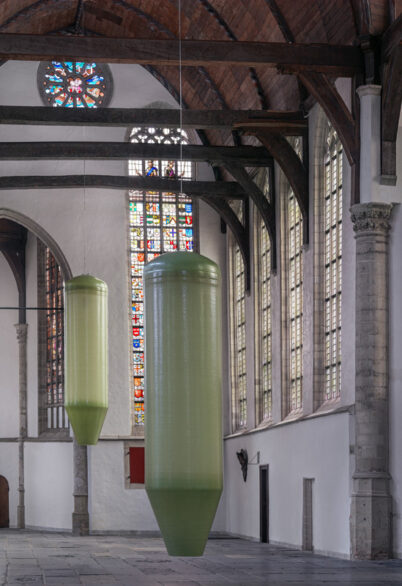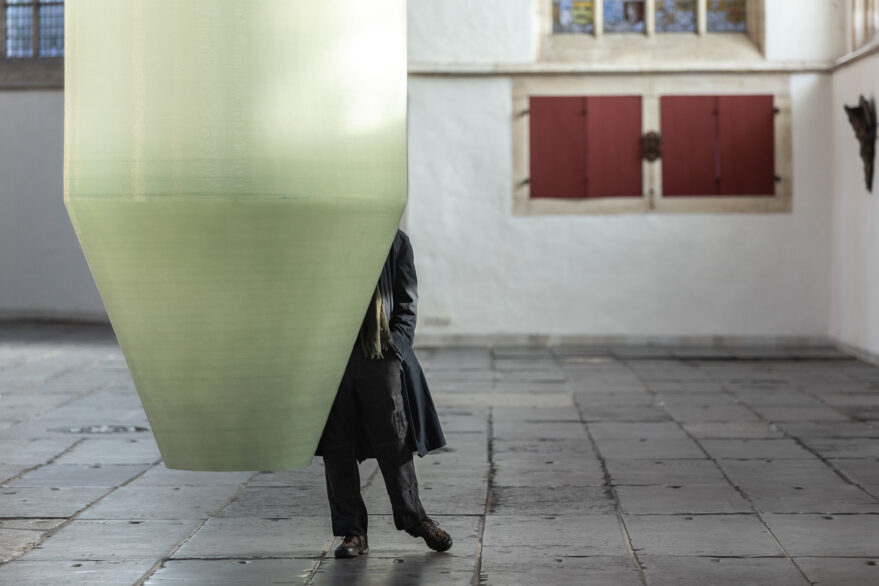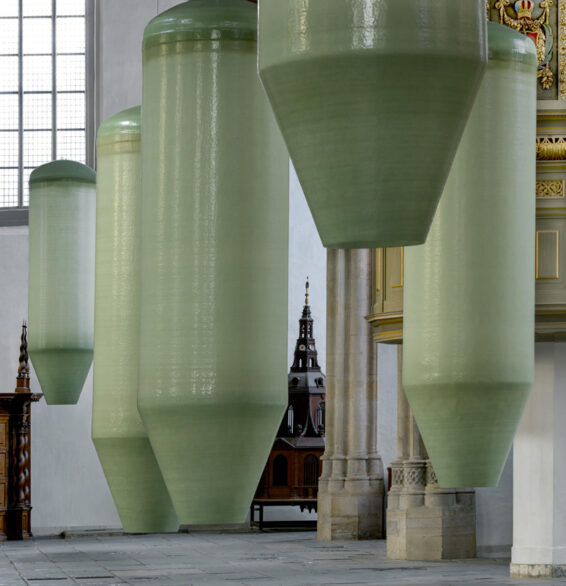






The press about The Fall 'Best Art of 2021' according to Het Parool and NRC Handelsblad. 'Susan Philipsz fills the immense emptiness of the Oude Kerk. A combination of music, architecture and melancholy.' [ De Volkskrant ] 'Sweelinck knew how his instruments’ voice cocreated the space and thus connected the religious community; 400 years later Philipsz’ voices cocreates the same space. ' [ De Groene Amsterdammer ] Philipsz began as a sculptor. She still is, although she does not work with stone, but with sound. [ HART Magazine ]
Also see

What's on -
Hover for exhibition details
Sound architect
Philipsz has been called a sound architect. As a starting point for her installations she usually uses existing music and pieces that are connected with the history and stories of a location. With her own arrangements, Philipsz explores the emotional and spatial dimension of sound. Using sound recordings, mainly of her own voice, she creates immersive environments that heighten the listener’s awareness and temporarily alter their perception of themselves in a particular place and time. Her sound works have been seen and heard in numerous places. From remote places such as alleys and forests to public spaces, such as on a platform at the Documenta in Kassel, under the Erasmus Bridge in Rotterdam and recently an abandoned swimming pool in Bonn.
About The Fall
For her sound installation in the Oude Kerk she is taking music by the Netherlands’ most famous composer, Jan Pieterszoon Sweelinck, as her starting point. After the Reformation, Sweelinck laid the foundation for public organ recitals taking place in the Oude Kerk. Young organists from all over Europe came to Amsterdam to attend his lessons. Sweelinck was buried in the Oude Kerk 400 years ago and this anniversary is commemorated with a festival. Philipsz seeks to engage with this celebration through her work. This autumn, she will be exploring the unique acoustics of the city’s oldest building in a new way: through adaptations of Sweelinck’s music. She will examine the architecture and surrounding space further by allowing her own voice to resound in this monumental setting. Visually, the installation will make the monumental surroundings of the Oude Kerk manifest in a new way.
Broken ensemble
In addition to an extensive installation for the church space, artist Susan Philipsz (Glasgow, 1965) has developed a separate sound work entitled Broken Ensemble (2021) for the Collegekamer of Oude Kerk.The work consists of a sculpture of three organ pipes that each channel the sound of the artist’s breathing through a loudspeaker placed in each pipe. Thus, the sound recording seems to play the organ pipes and the breathing brings the instrument to life. The physical effort of producing sound is clearly audible and the resonating rhythmic tones are reminiscent of sleep. The combined effect of sleep as a metaphor for death and breath as a symbol for life alludes to mortality.
About Susan Philipsz
Philipsz studied sculpture at the Duncan of Jordanstone College of Art in Dundee and completed a masters in Fine Art at the University of Ulster. Her work has been exhibited in numerous places worldwide since. Some examples: the Melbourne International Biennial in 1999, Manifesta 3 in Ljubljana in 2000, the Tirana Biennial in 2001, the Tate Triennial of British Art in 2003 and the 16th Biennale of Sydney in 2008. In 2010 she received a commission to make a work for the Solomon R. Guggenheim Museum in New York. In 2013, work by Philipsz was included in ‘Soundings: A Contemporary Score’, the first-ever major exhibition of sound art at the Museum of Modern Art in New York City. She won the Turner Prize in 2010. This was the first time the prestigious award was given to a sound work.

